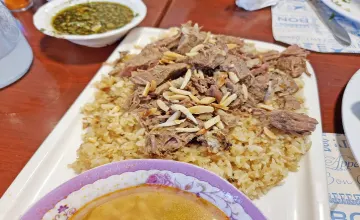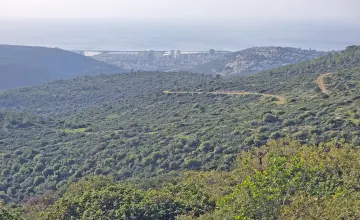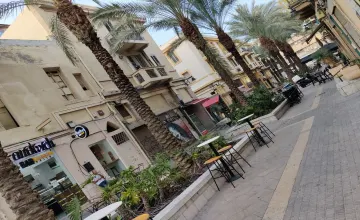Step routes in Haifa
Haifa travel guideTHE GERMAN COLONY
The itinerary begins at the Gedera Steps to Hahashmonaim Street. From here take a left turn to the Gamla Steps and walk about 350m. along Golomb Street to the Koresh Steps. On Arlosorov Street turn left to Buniak Steps and to Hillel Street and again to the left to Zionut Avenue and towards the Bahai site. On the right side of the Bahai Temple, descend from Shifra Street via the Shifra Steps to Abbas Street, turn left to Hacramim descent and then on Hagefen Street towards the German Colony. The views on this walk are very special and descending the scenic steps contributes to the charm. The Bahai sites, the Nazareth Nuns’ School building near the Shifra Steps and the German Colony itself complete an interesting tour. Return to the Carmel Center by bus no. 22, which does NOT run on Saturdays.
WADI NISNAS
The Step route descends to Abbas Street as in itinerary a. On Abbas Street, turn right to Zionut Avenue, continuing along Shabtai Levy Street to the Haifa Museum. From there descend to Wadi Nisnas via the Dor Steps and walk along Hawadi Street and the Market Mall on St. John’s Street. This walk, in the part below the Haifa Museum and along the Wadi Nisnas axis is characterised by the aroma of oriental foods and spices. Further down, on Ha’azmaut Street close to the port, thepavement offers multiple bargain stalls proposing. a wide open sky market. Return to the Hadar with bus no. 10 or 12 or to the Carmel Center with bus no. 22 or 37.
PARIS SQUARE
As in itineraries a and B, descend via the steps to Hahashmonaim Street. Turn right to Wingate Street and via Montefiori descend to the Spinoza Steps. After crossing Hess and Bar Giora Streets you will reach Arlosorov Street where you turn left, continue about 300m. and continue descending via the Shmuel Steps to Ben Yehuda Street again, turn left, continue about 100m. and descend to Hanevi’im Street via the Tzfat Steps. Hanevi’im Street is one of Hadar’s busiest thoroughfares and here you will find shops, cinemas, kiosks and restaurants. Walk to Shivat Zion Street and continue along Hatib Lane to Paris Square and downtown Haifa. Return to the hadar with bus no.10, 12 or to Carmel Center with bus no.22, 37.
EL PASHA
Descend to Arlosorov Street as in itinerary C. Continue to the right about 200m. and then left to Chaim Steps. From here the route crosses the classical residential area of Hadar, where houses date from the 1920s and 1930s. Continue to Yosef Street where you turn left and reach the Usha Steps after about 150m. This leads to Pevzner Street, again turn left, go on about 100m. and descend via Hillel Yafe Steps to humming Herzl Street. We cross the Nordau Pedestrian Mall which offers many restaurants, street cafes and shops. Cross Herzl Street and descend to Hehalutz Street where we turn left for about 150m. and then right to Shapira Street. Continue your descent down Ma’ale Hashihrur Street until reaching the Ajlun Steps. Here descend to the House of Mustafa EL-Halil Pasha in the old town. Tour the area and then return to the Hadar and to the Carmel Center as in itinerary B.







